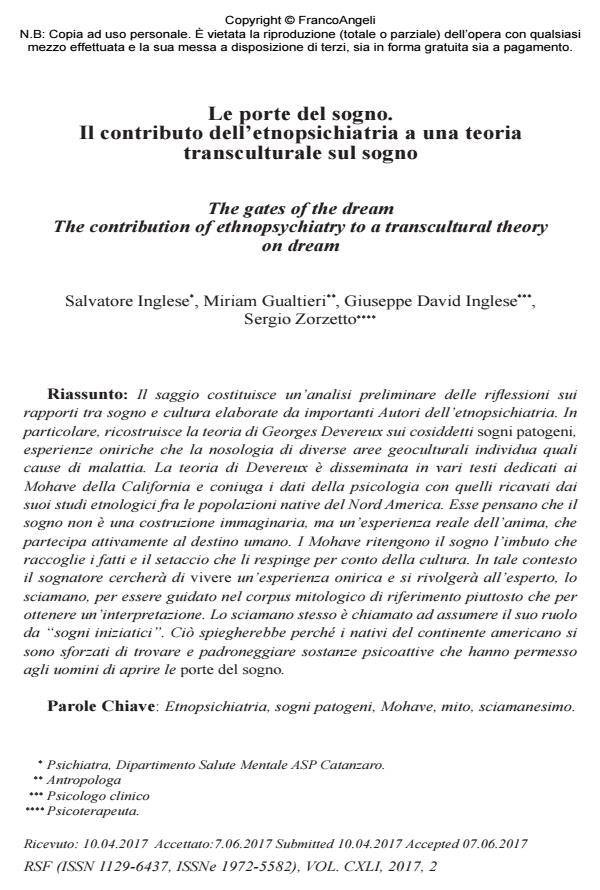The gates of the dream. The contribution of ethnopsychiatry to a transcultural theory on dream
Journal title RIVISTA SPERIMENTALE DI FRENIATRIA
Author/s Salvatore Inglese, Miriam Gualtieri, Giuseppe David Inglese, Sergio Zorzetto
Publishing Year 2017 Issue 2017/2
Language Italian Pages 20 P. 37-56 File size 1779 KB
DOI 10.3280/RSF2017-002003
DOI is like a bar code for intellectual property: to have more infomation
click here
Below, you can see the article first page
If you want to buy this article in PDF format, you can do it, following the instructions to buy download credits

FrancoAngeli is member of Publishers International Linking Association, Inc (PILA), a not-for-profit association which run the CrossRef service enabling links to and from online scholarly content.
The authors offer a preliminary analysis of eminent ethnopsychiatrists’ reflections on the relationship between dream and culture. In particular, they present Georges Devereux’s theory on the so-called pathogenic dreams, i.e. oniric experiences considered the cause of illness by the nosology of different geo-cultural areas. Devereux’s theory is disseminated in various manuscripts on the Mohave of California. His approach combines psychological and ethnological data drawn from his studies among the North American native people. In these societies, a dream is not an imaginary construction, but a real experience of the soul participating actively to human destiny. The Mohave think about a dream as a ‘funnel’ that admits, or as a ‘sieve’ that rejects facts on behalf of culture. In this cultural context the dreamer will try to live a dream, and ask an expert, the shaman, to guide him or her through the mythological corpus, not expecting an interpretation. The shaman then plays his role using "initiatory dreams". Such facts may explain why American native people have tried to find, and master, psychoactive substances that allow human beings to open the gates of the dream.
Keywords: Ethnopsychiatry, Pathogenic Dreams, Mohave, Myth, Shamanism.
Salvatore Inglese, Miriam Gualtieri, Giuseppe David Inglese, Sergio Zorzetto, Le porte del sogno. Il contributo dell’etnopsichiatria a una teoria transculturale sul sogno in "RIVISTA SPERIMENTALE DI FRENIATRIA" 2/2017, pp 37-56, DOI: 10.3280/RSF2017-002003